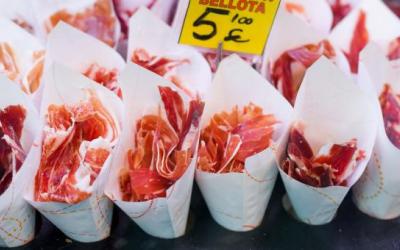The present and future of live pig trade in the EU

The trade in live pigs between the countries of the European Union has been affected by the sanitary situation, logistical difficulties after covid-19 , as well as the fact that production is experiencing stricter regulations and increased competitiveness.
In 2021, more than 31 micro pigs were traded between the EU countries, a sharp decrease compared to 2017 (-10%). The spread of African swine fever (ASF) in Belgium in 2018, then in Germany in 2020, as well as logistical problems associated with COVID-19, has complicated the international live trade. Historically, this trade took place in Northern Europe, especially between bordering countries. The Netherlands, Denmark and Germany generate 82% of European flows. Transportation over longer distances is still possible, although European regulations make it more difficult. Slaughter pigs are exported at high remuneration in order to adjust domestic supply according to demand. The EXPORT of piglets associated with specialized production complies with environmental restrictions, allowing for on-site rearing.
The two main exporters of live pigs, the Netherlands and Denmark, export more than 23 million pigs annually to other EU member states.
In the Netherlands, exports fell by 17.4% between 2020 and 2021 due to a sharp fall in the country's production. Exports to Germany, the main destination of the Netherlands, fell in both piglets and slaughter pigs, halving to less than 650,000 heads, barely a quarter of 2017 exports. This is also due to the decline in pork prices in Germany after the outbreak of ASF.
For Denmark, the main destinations are Germany and Poland. The export of Danish piglets to Poland has been falling since 2018 and this trend is increasing in 2021 (-12% in 21/20). This decrease is explained by the spread of ASF in Poland and the low profitability of finishing. Flows of Danish piglets to Germany remain stable, but the advantage of domestic origin in Germany could lead to a decline.
Spain imported 2.5 million piglets in 2021, including 1.9 million from the Netherlands, supporting recent domestic growth and offsetting the loss of piglets on farms affected by the PRRSV. To meet the increased domestic slaughter capacity, Spain imports more than 600,000 slaughter pigs per year.
As for France, this country mainly exports slaughter pigs to Belgium (259 thousand heads in 2021) and occasionally trades with Spain (131 thousand pigs in 2021).
Intra-EU trade in live animals is expected to decline in the coming years, driven in part by lower production in the Netherlands and Denmark and lower demand in Germany.
Read together with it:
- An HSE expert reported on the "evolution of inequality" in access to healthcare.An HSE researcher analyzed Russians' access to healthcare over a ten-year period. In 2021, the influence of financial factors became noticeable for the first time: low income reduces the likelihood of visiting a DOCTOR.Over the ten years from 2011 to 2021, the number of Russians requiring medical care but not receiving it remained virtually unchanged, according to a study by Lyudmila Zasimova, hea...
- The IEA sees a risk of a decline in oil production in Russia due to sanctions.The IEA sees a risk of reduced oil production in RUSSIA due to US sanctions , but maintains its production forecast. According to the IEA, Russian oil exports will remain unchanged.There is a "significant downside risk" to Russia's oil production forecast due to US sanctions, the International Energy Agency (IEA) said in a report.BLOOMBERG . The agency's experts believe that the latest US sanction...
- "Коллективы АПК способны решать любые задачи даже в непростых условиях". Назаров о заслугах сельхозпроизводителейЮрий Назаров 13 ноября, Минск. Обеспечение продовольственной безопасности страны - большое достижение трудовых коллективов аграриев, отметил управляющий делами Президента Республики Беларусь Юрий Назаров на торжественной церемонии награждения государственными и иными наградами работников АПК Управления делами Президента Республики Беларусь, передает корреспондент БЕЛТА. Торжественная церемония наг...
- Sustainable growth of the food and processing industries in BashkortostanIlshat Fazrakhmanov, Deputy Prime Minister andThe regional Minister of Agriculture noted that the development of these industries provides the population with essential food products and contributes to increased exports. Since 2020, agricultural exports from the region have doubled. Since the beginning of 2......
- Rosselkhoznadzor has banned meat imports from two Belarusian enterprises due to violations.In addition, three other Belarusian producers are now subject to strict laboratory monitoring due to initial deviations: azithromycin was found in poultry MEAT from Druzhba Poultry Farm, and the pesticide imidacloprid was found in honey from Pchalyar Polachchyny Farm. Powdered MILK from Luninetsky Dairy Plant was also found to containcoli bacteria . These measures were taken at the request of the ...
- Princess Eugenie's art gallery has been accused of violating sanctions against Russia.According to British authorities, Hauser & Wirth supplied "luxury goods to individuals associated with Russia" between April and December 2022. The Times reports that the person in question is Princess Eugenie of York, a Moscow-based collector.HM Revenue & Customs has accused the contemporary art gallery Hauser & Wirth, whose London branch is directed by Princess Eugenie of York, the daughter of P...
- Революция в производстве ветеринарных вакцин: Щелковский биокомбинат увеличивает выпуск и развивает экспортБиокомбинат продолжает работу над созданием свыше 10 новых вакцин, некоторые из которых находятся на стадии клинических испытаний, а другие — в процессе регистрации как в России, так и за границей. При этом особое внимание уделяется разработкам в области свиноводства. Компания не только обеспечивает внутренний рынок, но и активно развивает экспортные направления, поставляя вакцины в более чем 2......




























































